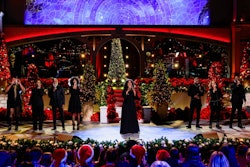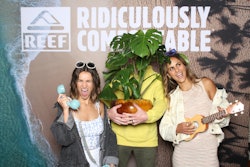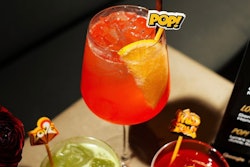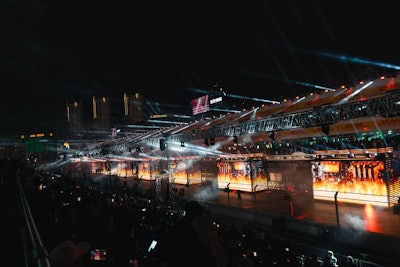
Matt Hohmann is the senior director of production services, Corporate & Events, at PRG (Production Resource Group). He's based in Chicago.
 Matt HohmannPhoto: Courtesy of Production Resource Group
Matt HohmannPhoto: Courtesy of Production Resource Group
A few years later, I joined the crew in the audio department. By high school, I was still deeply involved in production, honing my skills and exploring career paths. I stayed active in theatrical productions in the lighting, audio, and scenic departments and applied to the Illinois Theatre Association’s High School Theatre Festival as a technician. I was selected and spent a spring break producing a musical at a large university with some other very skilled crew and actors. That experience solidified my desire to make this my career.
At first, I thought I wanted to be a lighting designer or technician, so I pursued a degree in theatrical design and production. In college, I attended the United States Institute for Theatre Technology (USITT) trade show, where I discovered PRG. I had primarily researched manufacturers and large theater companies, so PRG wasn’t on my radar until I walked past their booth and saw their massive moving lights—probably the PRG Bad Boy at the time. I met a member of their HR team, who encouraged me to apply for an internship.
I did so, at PRG Chicago, and spent the summer there. The next year, I went back to the company, this time as an intern in Los Angeles. From there, I returned to school and then took another internship at PRG for half of a summer at the New Windsor, N.Y., office. I spent the back half of that summer working as an electrician for a lighting design firm shooting a show on a soundstage for BET. During my senior year, I reached out to the same HR recruiter I had met years earlier. By then, I had realized I was more interested in logistics and finance than becoming a designer. He already knew that given my time in New Windsor, and suggested I apply for a role at PRG Services in Detroit, which focused on the automotive market.
I started as a production coordinator; I was then promoted to production manager and, eventually, to senior production manager. As senior PM, I took on roles such as managing the CES program for PRG where we supported more than 14 booths several years consecutively and grew to take on the larger shows that the Corporate & Events group supported. I moved back to Chicago where I am based now and then took on the director of production role a few years ago. I am excited to work with this Technical Direction team in my newly appointed role moving forward (senior director of production services) and hope to continue to make a positive impact."
What innovation means to him: "Innovation, to me, is about identifying opportunities to improve efficiency, collaboration, and execution—whether through new technology, better processes, or fresh approaches to problem-solving. It’s not just about having a fresh inventory of lights and speakers; it’s about finding real solutions that make an impact.
One of the ways I stay innovative is by paying attention to how our teams work—what slows us down, what makes us better—and pushing for systems that remove friction and improve transparency. Implementing tools like project management software is about reducing reliance on email and making information more accessible so teams can execute faster and with more clarity.
I get inspired by seeing how small operational improvements can have a huge effect on the way we deliver shows, and I try to apply that mindset to every project."
What sets his work apart: "High standards and empathy. Too often, mediocrity is accepted in our industry, but I’m grateful that our clients expect more. I hold myself and our on-site teams to high standards, anticipating client feedback before it’s given and refining our approach accordingly. In live events, there are no second chances, and that drives me to be meticulous in preparation.
Beyond execution, I believe in the human element of production. We push ourselves and our teams hard to succeed, but empathy—understanding the pressures on crew, vendor partners, venue staff, clients, and audiences—is just as important. When we prioritize respect and collaboration, we create a productive, trusting environment that results in better shows, better partnerships, and long-term success."
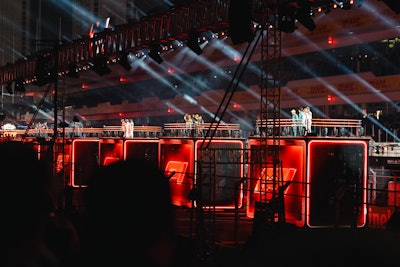 "What made this show special was its novelty and scale," Hohmann says of the Formula 1 Las Vegas Grand Prix 2023 opening ceremony.Photo: Courtesy of Production Resource Group
"What made this show special was its novelty and scale," Hohmann says of the Formula 1 Las Vegas Grand Prix 2023 opening ceremony.Photo: Courtesy of Production Resource Group
Memorable moment: "PRG played a major role in the inaugural Formula 1 Las Vegas Grand Prix in 2023, providing lighting, audio, automation, LED, media servers, and more for the opening ceremony, which featured over 10 headline artists.
I served as site and production manager for the event, overseeing all PRG on-site activities. The team and I managed the integration of multiple departments with the venue, production team, and other contractors—ensuring they had the resources, schedule, and safety protocols needed to execute flawlessly. It was 30 days spent in Las Vegas (and two hotels), but the production went flawlessly from a technical and logistical perspective and the team had a lot to be proud of.
What made this show special was its novelty and scale. People often compare events to the Super Bowl halftime show—but, for reference, we exceeded the typical number of lighting instruments used at the Super Bowl by over 100, and we deployed them across a larger site. In addition to lighting, we installed a sizable PA and provided seven custom mobile scenic units (MSUs), each clad in LED tiles and designed for talent performances. These MSUs drove under their own power from PRG’s Las Vegas facility to the show site under police escort. I led the transport operation in both directions in conjunction with our scenic team, ensuring everything moved smoothly and safely.
It was an enormous undertaking involving dozens of us, and I’m incredibly proud of what the PRG team accomplished."
His biggest hope for the industry: "I’m excited to see more experiential events. The industry is shifting away from passive audience experiences and lectures—clients and brands now want immersive, interactive moments that engage people in new ways. Whether it’s AR/VR integration, AI-driven personalization, or innovative creative design concepts, we’re seeing technology and definition of physical space with props, scenery, and interactive elements play a bigger role in shaping experiences.
The challenge is balancing creativity with logistical and financial feasibility. Large-scale productions still need to be executed efficiently, and that’s where problem-solving and smart planning come in. I think the future will favor those who can not only push creative boundaries but also deliver them in a way that’s scalable, sustainable, and cost-effective. For me, that means continuing to innovate on both the technical and operational sides—so we’re not just meeting expectations, but redefining them."




